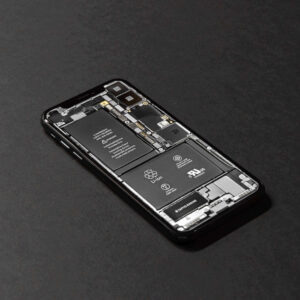
Everything you do on your iPhone, like watching videos, browsing the internet, texting friends, checking for new Facebook posts, responding to emails, and more, depletes the battery.
Nowadays, it’s difficult to get by without a smartphone. These tiny devices hold so much of our life that we don’t want them to run out of power when we least expect it. It matters as much as a good internet service, provided by Ziply Customer Support.
However, because Apple (for now) insists on using its own lightning wire, a compatible charger isn’t always available.
Fortunately, there are ways to keep your smartphone from dying just when you need it to. Below, we’ll look at the most effective strategies for extending the life of your iPhone’s battery.
How to Check iPhone Battery Health
The battery of a smartphone will inevitably lose capacity over time. Your phone won’t keep a charge as long as it did when it was new if it is two years old. Battery life, on the other hand, refers to how long you can go between charges, and this is known as “battery health.”
Apple makes it simple for people to check the battery life of their iPhones. You can check the state of your phone’s battery with only a few touches. So, on your iOS smartphone, follow these easy instructions:
On your iPhone, launch the Settings app.
Tap Battery as you go down.
Select Battery Health & Charging.
The greater the maximum capacity, the better the battery. For instance, a battery that is 95 percent charged at full capacity will still store 95 percent of its initial charge.
Turn on Low Power Mode
Low Power Mode is undoubtedly the most effective thing to do if you want to have a good battery life. When turned on, your phone only performs the absolute necessities; background processes like downloading and mail retrieval are therefore disabled.
When the battery drops to about 20%, Low Power Mode will automatically activate, but you can also turn it on manually to extend the life of your phone. You can do this via your Settings.
You may also enable Low Power Mode in the Control Center by going to Settings > Control Center. The top-right battery icon will become yellow when it is active. Keep in mind that this mode will only operate if the battery on your phone is below 80%.
Control the Screen’s Brightness
The iPhone’s battery depletes far more quickly when the screen is bright than when it is dim. From the Control Center, you may quickly decrease your brightness. Drag the brightness slider downward by swiping it down from the top-right corner of your screen.
Additionally, disabling automatic brightness can help your iPhone’s battery last longer. Otherwise, despite your brightness setting, the feature will automatically increase your screen’s brightness when it’s required, such as when you’re outside in bright light.
Keep in mind that if you disable the Auto-Brightness option, you’ll need to control your brightness more carefully. Avoid using your smartphone for extended periods at high brightness.
Deactivate Location Services
When your GPS is on in the background at all times, it will drain your battery life. Through Settings > Privacy & Security > Location Services, you can totally disable location services, which will restrict your phone from sending location information to these services.
However, this will cause a lot of helpful apps to stop functioning. You can’t ask Google for directions based on your present location or use your weather app to get the most recent prediction without your location being known.
Apple allows you to limit individual applications if you do not wish to take extreme measures.
You may choose whether to ask an app for permission to access your location the next time, when you share it, while you’re using the app, or always from the Location Services settings page.
We also advise turning off the “Find My App” if you need more battery life and if you’re disclosing your location with friends and family. If you click on your name under Settings, you will find the option to do so.
Reducing Notifications
To disable these alerts for a specified period of time, use the Focus feature under Settings > Focus to set restrictions on when notifications have permission to arrive. Do Not Disturb can be enabled by choosing Focus Status.
Setting requirements based on a single notification is an additional choice. Swipe left on an alert to hide it if you no longer want to see it, then tap on Options to request that it be sent more discreetly in the future.
This indicates that it won’t appear on your lock screen, play music, or display a banner or badge symbol before going to your Notification Center. Additionally, you can fully disable this app’s notifications.
All in All
You can extend the life of your iPhone by using the above suggestions. You can also delay charges for a lot longer by making a few changes to your workflow.
It’s one thing to extend the battery life of your iPhone; it’s quite another to keep the battery healthy over the long term. Making sure you receive the longest possible battery life from your iPhone is just as vital, if not more so.



